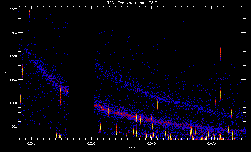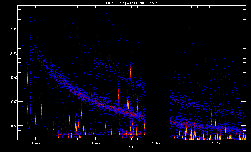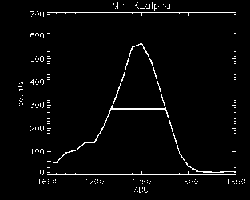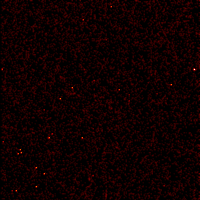First results from XMM-Newton RGS and EPIC MOS instruments cooling - XMM-Newton
First results from XMM-Newton RGS and EPIC MOS instruments cooling
During November and December 2002 a series of operations are underway in order to lower the nominal operating temperatures of the RGS and EPIC MOS instruments, and to subsequently re-establish their calibration. The purpose of the cooling is to move important detector characteristics back towards the values which they had earlier in the mission.
The animated gif movies linked to this page illustrate graphically and impressively the benefits derived from the cooling exercise and already apparent in the first data obtained during and after the cooling.
The SOC and PI teams are cooperating in the derivation of updated calibration files to cover the new condition of the instruments. Any impact on the delivery of reduced data products from the XMM-Newton Survey Science Centre (SSC) will be kept to a minimum. SSC will rapidly integrate the new calibration files into the data pipeline.
RGS Cooling
 |
 |
|
| RGS1 cooling as seen in the energy (PI vs Beta) plot. | RGS2 cooling as seen in the energy (PI vs Beta) plot. | |
| (click image to enlarge - 2.6MB) | (click image to enlarge - 2.1MB) |
Since the beginning of the mission the RGS instruments have been operated at a temperature of -80 C . During the intervening three years the instruments' performance has been significantly affected by ionizing radiation. A reduction of operating temperature has been expected to result in a substantial improvement of the instrumental characteristics.
The cooling of RGS2 was the first step of the RGS and EPIC MOS cooling campaign. It took place in the night November 3-4 2002 while observing Mkn 421. The instrument was cooled from the operating temperature of -80 C to -113 C. A further cooling to -115 C was performed a few hours later.
As anticipated, the temperature decrease resulted in major improvements in the quality of the data. In particular, the number of hot columns and flickering pixels decreased dramatically.
The RGS2 movie (prepared by the RGS Team at SRON) shows the effect of the change in temperature in the energy (PI vs Beta) plot. As the temperature goes down (as shown by a counter at the top of the plot), hot columns gradually disappear. At the lowest temperature there is only one hot column left, on CCD#9 near beta 0.039, and some hot pixels near beta 0.072. Also, the CTE (Charge Transfer Efficiency) has been restored to close to its pre-launch levels. The CCD noise has substantially decreased and the width of the noise distribution is in fact narrower now than ever seen at the previous operational temperature of -80 C.
The RGS1 CCD bench was cooled in the night November 13-14. Following the RGS2 cooling earlier in the month data analysis had indicated that the best choice of operating temperature would be -110 degrees C. Therefore during this activity both RGS1 and RGS2 CCD benches were brought to that temperature.
The RGS1 movie demonstrates that the benefits of cooling, previously seen in RGS2 data, have been confirmed with RGS1. Once again, the signal from hot pixels and columns is seen to fall through energy space as the temperature falls, leaving a greatly improved spectrum as the new operating temperature is reached.
EPIC MOS Cooling
 |
 |
|
| MOS cooling benefit as seen in the FWHM of the Mn-K_alpha line. | Hot pixels fade out during MOS cooling. | |
| (click image to enlarge - 89KB) | (click image to enlarge - 1.4MB) |
Since the beginning of the mission the EPIC MOS instruments have been operated at a temperature of -100 C . During the intervening three years the instrument performance has degraded significantly in terms of Charge Transfer Efficiency (CTE) and number of hot pixels due to the cumulative effects of ionizing radiation. A reduction of operating temperature has been expected to result in a substantial improvement of the instrumental characteristics.
The two EPIC MOS instruments were cooled in the night of November 6-7 2002, with the instruments in closed configuration. The instruments were cooled from the operating temperature of -100 C to -120 C.
As anticipated, the temperature decrease resulted in major improvements in the quality of the data. In particular, the energy resolution of spectral lines improved markedly, and the contribution of spurious thermally generated events fell by a factor of three.
The first movie (prepared by ESA and EPIC PI personnel monitoring the operations at VilSpa) shows the effect of the change in temperature on the energy resolution and on the distribution of hot pixels. As the temperature goes down the graphic displaying the Mn-K_alpha line shows how the measured line-width narrows while the apparent energy shifts. Both effects track the improvement in CTE. (Note that the preliminary analysis has been done with data not yet corrected for the new CTE values, so the final energy resolution will be much better.)
Preliminary analysis of CTE shows an improvement by a factor of 3 for MOS2 and 2 for MOS1.
The second movie shows the disappearance of hot pixels as the temperature falls.
- Removed a total of (1) style text-align:center;








































 Sign in
Sign in
 Science & Technology
Science & Technology